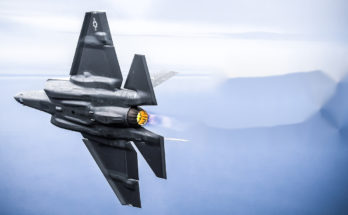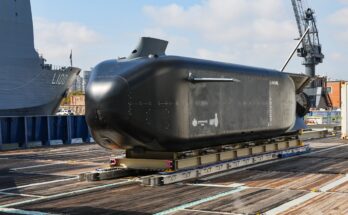By Stuart Slade, Forecast International.
Australia has invited France, Germany and Japan to bid for SEA-1000, its ambitious Collins-class submarine replacement program. The program, for 12 long-range, ocean-going, diesel-electric submarines, is valued at AUD50 billion ($38.8 billion). Competitive evaluation of the quotations is expected to take at least 10 months, after which the Defence Department will advise the government on the proposal most suited to Australia’s needs.
SEA-1000 envisions a submarine that will be capable of anti-ship and anti-submarine warfare, strategic strike, mine detection and minelaying operations, intelligence collection, support of special forces (including infiltration and exfiltration missions), and the gathering of battlespace data in support of operations. The submarines are likely to carry long-range cruise missiles in addition to shorter-range missiles and torpedoes. The new submarines might also carry midget submarines that will be used to collect intelligence or land special forces troops.
Long transits and potentially short-notice contingencies in Australia’s primary operational environment demand high levels of mobility and endurance. The boats need to be able to undertake prolonged covert patrols over the full distance of the country’s strategic approaches and in operational areas. They require low signatures across all spectrums, including at higher speeds. It is expected that the submarines will have an air-independent propulsion system that will allow them to remain underwater much longer than the Collins class can. The implication of these requirements is that the resulting submarine design will be significantly larger and more capable than any other diesel-electric submarine currently in service.
Germany’s ThyssenKrupp Marine Systems (TKMS) has developed the new Type 216 submarine in response to the emerging Australian requirement. The Type 216 is characterized by high speed, long range, long-duration-mission capability, and flexibility in equipment layout. The Type 216 will have a displacement of around 4,000 tons, with a crew of 33. Range will be 10,400 nautical miles at 10 knots, with an endurance of 80 days. The submarine will have a hull length of 89 meters, a beam of 8.1 meters, and a maximum draft of 6.6 meters. The Type 216 will be armed with six 21-inch torpedo tubes and two vertical launch systems for cruise missiles. It will be built out of HY-80 steel and use lithium-ion batteries.
The Japanese firms Mitsubishi Heavy Industries and Kawasaki Heavy Industries were considered the frontrunners for the project, but their prominence has been eclipsed by Australian insistence on an open tender for the program. Japan’s 4,200-metric-ton Soryu class boats are the only in-service diesel-electric submarines to meet the size and capabilities demanded by SEA-1000. The Japanese were reported to have set a unit price of $540 million for a Soryu produced in a Kawasaki or Mitsubishi yard, and therein lies the problem. Support from the Australian Labour Party is dependent on the submarines being built and maintained in Australia. Labour Party Leader Bill Shorten has described this as “a non-negotiable condition.” This would eliminate the Japanese proposal as currently constituted.
The French DCNS group is offering the Ocean design, an evolved version of its Scorpene-class diesel-electric submarine. This is a diesel-electric variant of the Barracuda-class nuclear submarine under construction for the French Navy. The truth is that the Australian requirement is for a nuclear submarine, but Australian governments have repeatedly rejected the nuclear propulsion option due to the lack of an Australian nuclear power industry. However, DCNS has sold a nuclear-powered submarine to Brazil, thus opening the export market to submarines of this type. There has been some speculation that the Ocean submarine is a stealthy way of exposing the Australian government to the virtues of nuclear propulsion.
The next step in the SEA-1000 program will take place in 12-18 months, when Australia will award an AUD8 million contract to one or two submarine builders to provide full designs and fixed-price contract bids. At that point, the direction of SEA-1000 will become much clearer.
For 50 years, Forecast International intelligence reports have been the aerospace and defense industry standard for accurate research, analysis, and projections. Our experienced analysts compile, evaluate, and present accurate data for decision makers. FI's market research reports offer concise analysis of individual programs and identify market opportunities. Each report includes a program overview, detailed statistics, recent developments and a competitive analysis, culminating in production forecasts spanning 10 or 15 years. Let our market intelligence reports be a key part of reducing uncertainties and mastering your specific market and its growth potential. Find out more at www.forecastinternational.com




